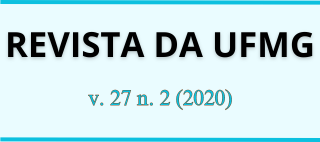Estimando as perdas de bens e atividades culturais decorrentes do rompimento da barragem de Fundão em Mariana, Minas Gerais, Brasil
DOI:
https://doi.org/10.35699/2316-770X.2020.20966Palavras-chave:
Valoração contingente, Desastre ambiental, Perdas culturais, Disposição a aceitar, Disposição a pagarResumo
Em novembro de 2015, ocorreu o rompimento da Barragem de Fundão, Minas Gerais. Além de provocar mortes e destruir comunidades inteiras, a tragédia motivou a perda de acesso ao patrimônio cultural edificado e a interrupção de importantes manifestações culturais no território atingido. Este artigo buscou mensurar as perdas culturais das 843 famílias atingidas no município de Mariana, a partir de survey utilizando o método de valoração contingente. Os resultados apontam para a elevada importância das manifestações e dos lugares de referência cultural para as comunidades atingidas, conforme indicado pela alta frequência a estes antes do desastre e pelos valores de disposição a aceitar (DAA) indenização pela perda parcial ou integral do acesso e das manifestações, reportadas pelos entrevistados.
Referências
ARDILA, S.; QUIROGA, R.; VAUGHAN, W. J. Review of the Use of Contingent Valuation Methods in Project Analysis at the Inter-American Development Bank.Washington: Inter-American Development Bank, 1998. 30 p. (Technical Report). Available on: https://publications.iadb.org/en/publication/11953/review-use-contingent-valuation-methods-project-analysis-inter-american. Accessed on: 23 jan. 2020.
ARROW, K. et al. Report of the NOOA Panel on Contingent Valuation. Washington: National Oceanic and Atmospheric Administration, US Department of Commerce, 1993. 66 p. (Technical Report).
BORGER, F. G.; BELLUZZO, W. Valor econômico do patrimônio histórico cultural: estudo de caso de avaliação do programa Monumenta. Patrimônio: Lazer & Turismo, Santos, v. 6, n. 7, p. 92-118, jul./set. 2009. Disponível em: https://www.unisantos.br/pos/revistapatrimonio/pdf/Artigo5_v6_n7_jul_ago_set2009_Patrimonio_UniSantos.pdf. Accessed on : 23 jan. 2020.
BURTRAW, D. et al. Costs and benefits of reducing air pollutants related to acid rain. Contemporary Economic Policy, v. 16, n. 4,p. 379-400, out. 1998. Available on: https://onlinelibrary.wiley.com/doi/abs/10.1111/j.1465-7287.1998.tb00527.x. Acessed on: 23 jan. 2020. https://doi.org/10.1111/j.1465-7287.1998.tb00527.x
BRASIL. Decreto nº 3.551, de 4 de agosto de 2000. Institui o Registro de Bens Culturais de Natureza Imaterial que constituem patrimônio cultural brasileiro, cria o Programa Nacional do Patrimônio Imaterial e outras providências. Available on: http://www.planalto.gov.br/ccivil_03/decreto/d3551.htm#:~:text=DECRETO%20N%C2%BA%203.551%2C%20DE%204,que%20lhe%20confere%20o%20art. Acessed on: 23 jan. 2020.
CARSON, R. et al. Contingent Valuation and Lost Passive Use: Damage from the Exxon Valdez Oil Spill. Environmental and Resource Economics, v. 25, n. 3,p. 257–286, 2003. Disponível em: https://link.springer.com/article/10.1023/A:1024486702104. Acessed on: 23 jan. 2020. https://doi.org/10.1023/A:1024486702104
IORGULESCU, F. et al. Considerations regarding the Valuation and Valorization of Cultural Heritage. Theoretical and Applied Economics,v. 18, n. 12, p. 15-32, 2011.Available on: http://store.ectap.ro/articole/666.pdf. Acessed on: 23 jan. 2020.
IVERSEN, T. A theory of hospital waiting lists. Journal of Health Economics, v. 12, n. 1, p. 55–71, 1993.Disponível em: https://www.sciencedirect.com/science/article/abs/pii/016762969390040L. Acessed on: 23 jan. 2020. https://doi.org/10.1016/0167-6296(93)90040-L
IPHAN - INSTITUTO DO PATRIMÔNIO HISTÓRICO E ARTÍSTICO NACIONAL. Portaria nº 375, de 19 de setembro de 2018. Institui a Política de Patrimônio Cultural Material do Iphan e dá outras providências. Available on: http://www.in.gov.br/materia/-/asset_publisher/Kujrw0TZC2Mb/content/id/41601273/do1-2018-09-20-portaria-n-375-de-19-de-setembro-de-2018-41601031. Acessed on: 23 jan. 2020.
KOTCHEN, M. J.D. (2000). Environmental attitudes, motivations, and contingent valuation of nonuse values: a case study involving endangered species. Ecological Economics, v. 32, n. 1, p. 93–107, 2000. Available on: https://www.sciencedirect.com/science/article/abs/pii/S0921800999000695 . Acessed on: 23 jan. 2020. https://doi.org/10.1016/S0921-8009(99)00069-5
KRUPNICK, A. et al. Age, Health and the Willingness to Pay for Mortality Risk Reductions: A Contingent Valuation Survey of Ontario Residents. Journal of Risk and Uncertainty, v. 24, p. 161–186, 2002. Available on: https://link.springer.com/article/10.1023/A:1014020027011. Acessed on: 23 jan. 2020. https://doi.org/10.1023/A:1014020027011
LEE, C. K.; HAN, S. Y. Estimating the use and preservation values of national parks’ tourism resources using a contingent valuation method. Tourism Management, v. 23, n. 5, p. 531–540, out. 2002. Available on: https://www.sciencedirect.com/science/article/abs/pii/S0261517702000109. Acessed on: 23 jan. 2020. https://doi.org/10.1016/S0261-5177(02)00010-9
QUARANTELLI, E. L. Disaster research. In: BORGATTA, E.; MONTGOMERY, R. (Eds.). Encyclopedia of Sociology. New York: Macmillan, 2000. p. 682-688.
RYAN, M.; FARRAR, S. Using conjoint analysis to elicit preferences for health care. BMJ, v. 320, n. 7248, p. 1530-1533, 2000. Available on: https://www.bmj.com/content/320/7248/1530. Acessed on: 23 jan. 2020. https://doi.org/10.1136/bmj.320.7248.1530
SANTAGATA, W.; SIGNORELLO, G. Contingent Valuation of a Cultural Public Good and Policy Design: The case of Napoli Musei Aperti. Journal of Cultural Economics, v. 24, p. 181-204, 2000. Available on: https://link.springer.com/article/10.1023/A%3A1007642231963. Acessed on: 23 jan. 2020. https://doi.org/10.1023/A:1007642231963
TAFNER, P. et al. Disposição a pagar em projetos de restauração do patrimônio histórico-cultural no Brasil. Pesquisa e Planejamento Econômico, v. 33, n. 3, p. 515-539, 2003.Available on: http://ppe.ipea.gov.br/index.php/ppe/article/view/81. Acessed on: 23 jan. 2020.
THROSBY, D. Economics and culture. Cambridge: Cambridge University, 2001.
THROSBY, D. Introduction and Overview. In: GINSBURGH, V. A.; THROSBY, D. (Eds.). Handbook of the economics of art and culture. Oxford: North-Holland Elsevier, 2008, p. 3-24.




